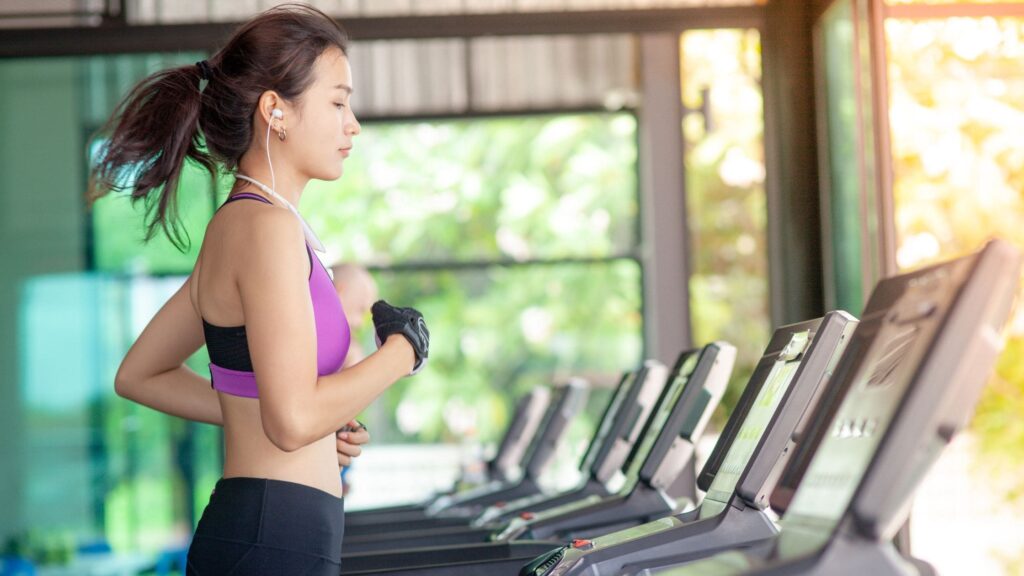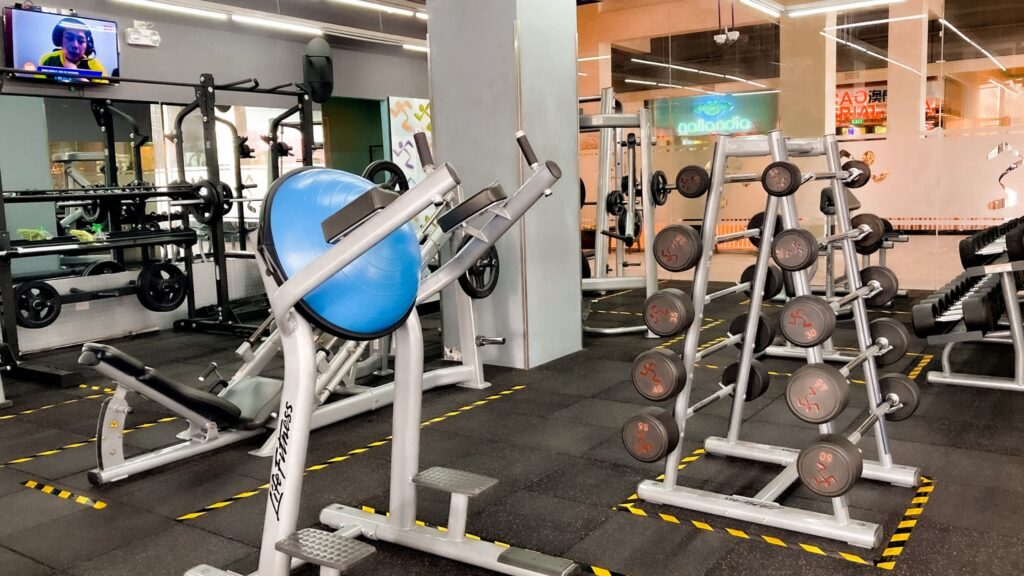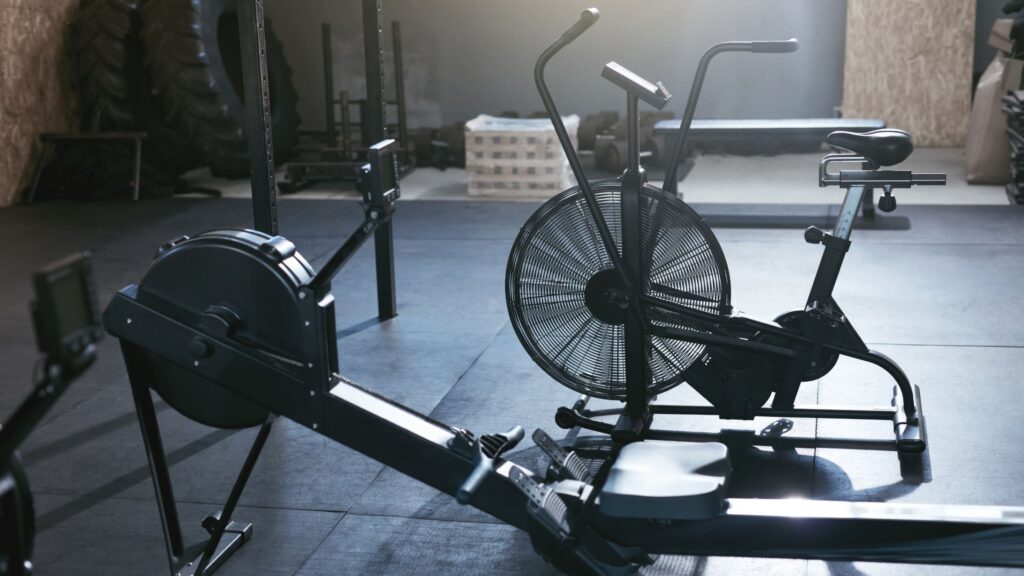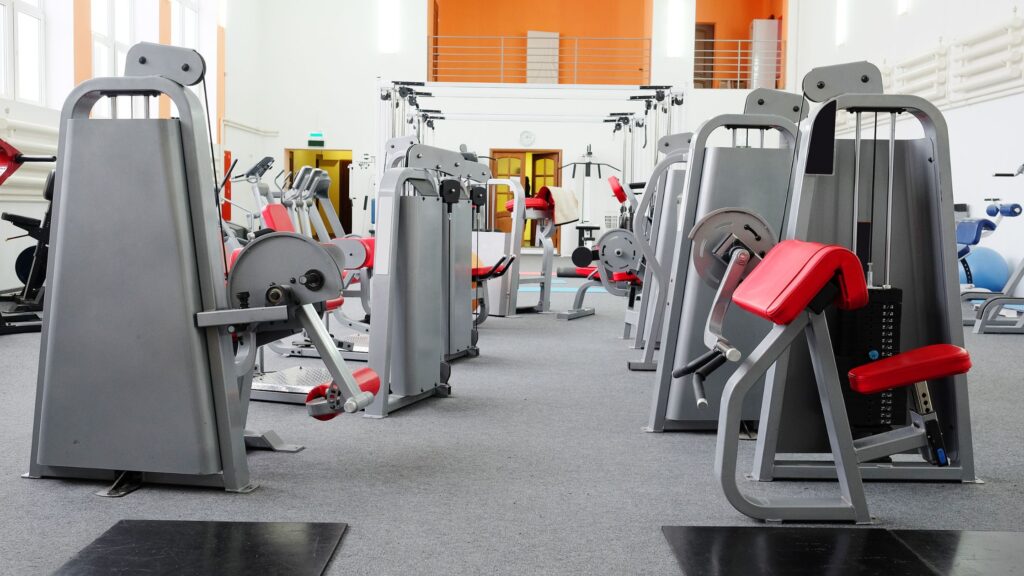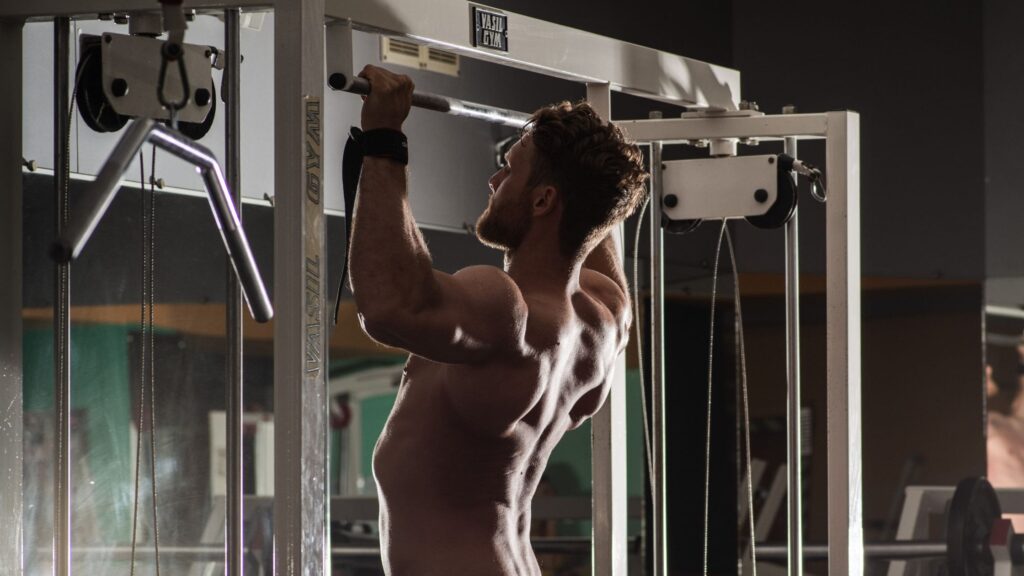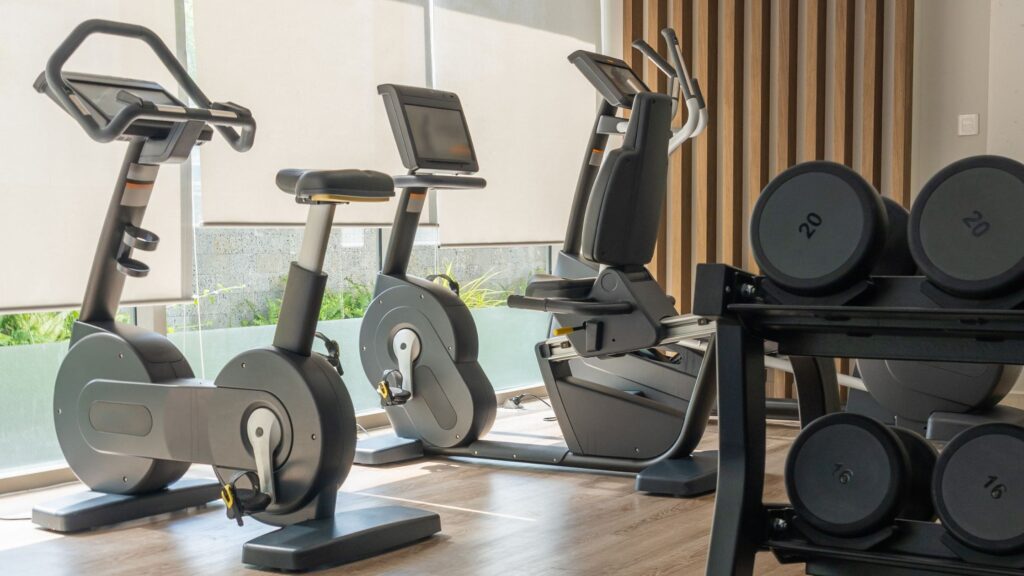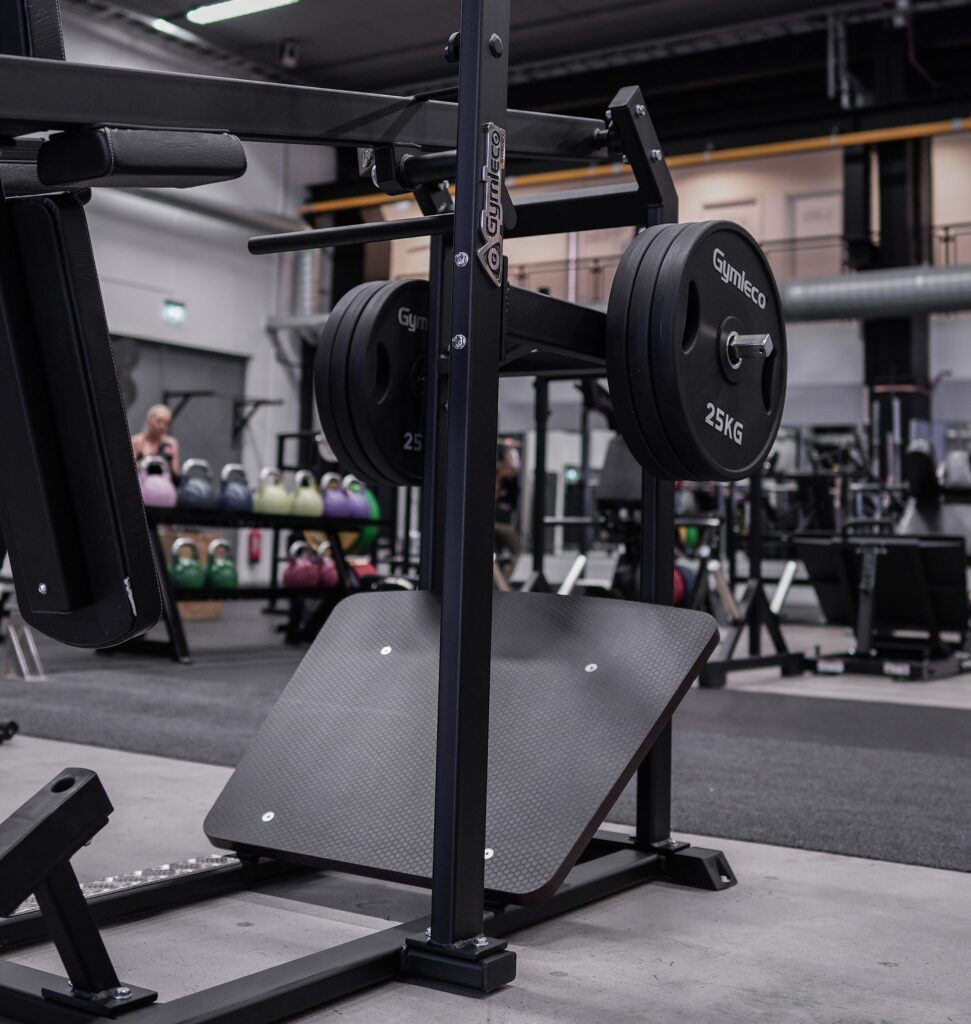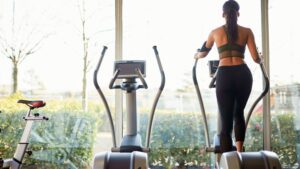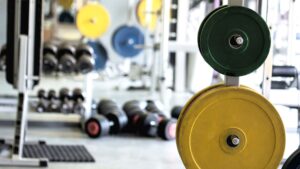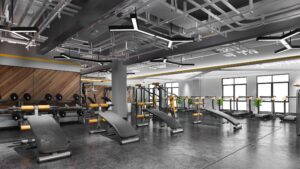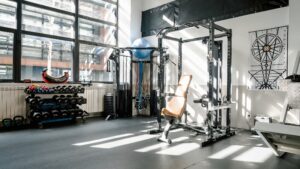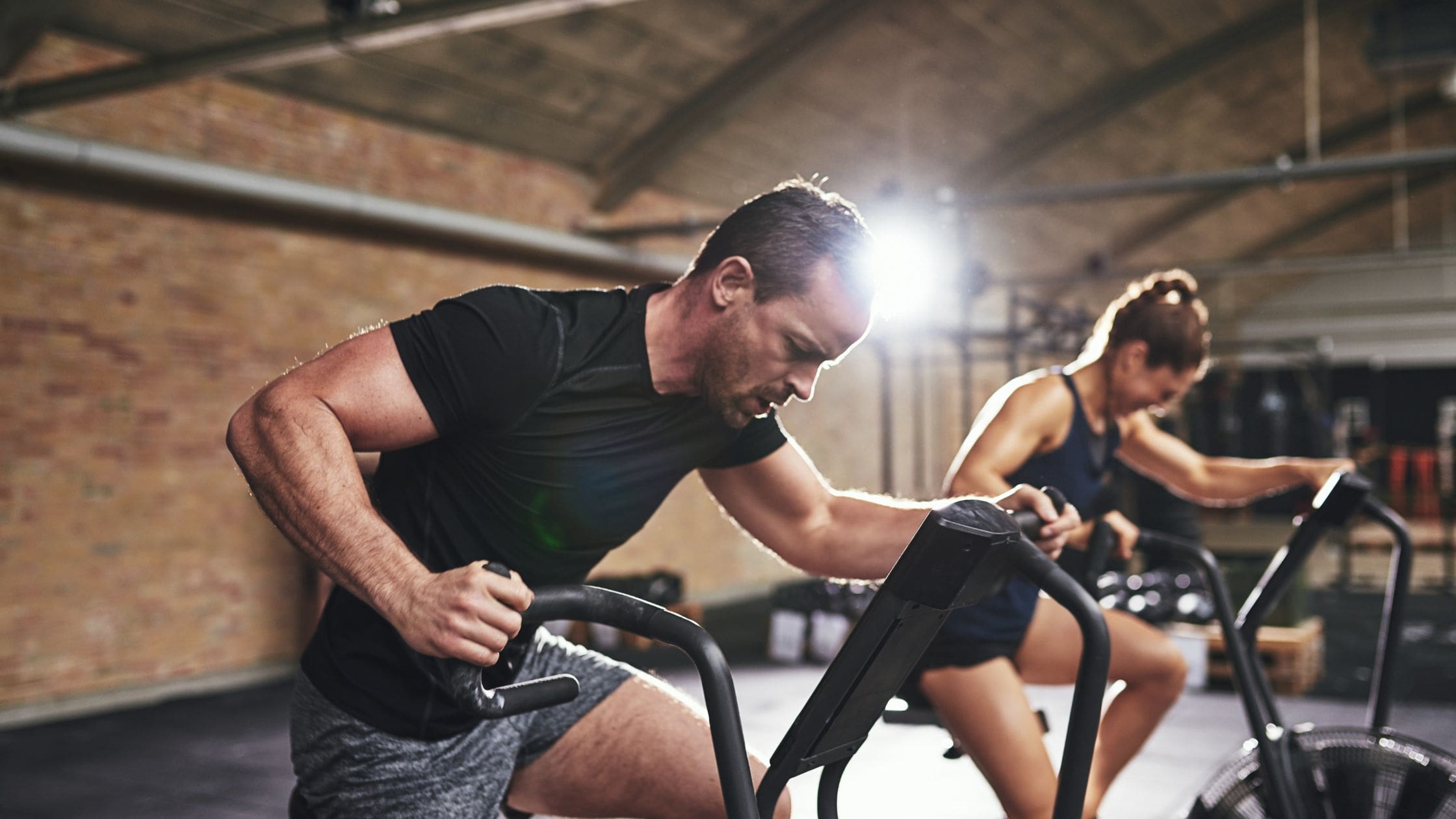
Used Gym Equipment Buying Guide
Building a home gym or upgrading your fitness space doesn’t have to break the bank. With the rising prices of new gym equipment, buying used fitness gear can be a smart way to save money while still getting the tools you need to crush your fitness goals.
The popularity of home gyms grew significantly during global health events, increasing the supply of second-hand equipment on the market. In fact, the global refurbished fitness equipment market was valued at $1.1 billion in 2021 and is projected to reach $1.9 billion by 2031, growing at a CAGR of 5.7% from 2022 to 2031.
From weight benches to treadmills, the second-hand gym equipment market offers plenty of opportunities to score quality gear at a fraction of the retail price, often cutting costs by 50%-75%. For example, a used treadmill can cost just a fraction of a new model.
However, a thorough check is essential to avoid hidden repair expenses. Additionally, reconfiguring gym setups is common every 10 years, making the second-hand market increasingly dynamic and diverse over time.
But not all deals are created equal. To get the most value for your money, it’s essential to know what to look for, how to spot hidden issues, and where to find reliable sellers.
In this article, we’ll guide you through the best practices for buying used gym equipment, so you can build a safe, functional, and budget-friendly workout space.
Should You Buy Used Gym Equipment?
Purchasing used gym equipment can be a wise investment under the right conditions. Durable items like cast-iron weights and basic cardio machines often remain in excellent condition over the years and can serve new owners well with minimal maintenance.
Older models, especially those with fewer electronic components, tend to be more reliable over the long term and are often considered safer purchases.
Moreover, buying used equipment contributes positively to environmental sustainability by extending the product life cycles and reducing waste.
While the cost savings can be significant, it’s important to balance these benefits against the potential for future repairs and the possibly shorter remaining lifespan of more complex machinery.
Some high-quality used machines, such as refurbished ellipticals or treadmills, may be available for a fraction of their original price, allowing budget-conscious buyers to diversify their home gym setups without compromising on quality.
Comparing Used vs. Brand New Gym Equipment
When deciding between new and used gym equipment, it is essential to consider both the immediate and long-term financial and practical benefits.
New equipment often comes with the latest features and full manufacturer warranties but also carries higher upfront costs and experiences rapid depreciation.
On the other hand, used equipment can be much more budget-friendly, often available at prices well below half of the cost of new gear, and is typically ready for immediate use.
While newer equipment might offer better aesthetics and cutting-edge technology, used machines that are properly maintained can still meet the needs of most fitness enthusiasts.
Additionally, because used equipment has already undergone most of its depreciation, it tends to retain its value for longer, making it a less risky investment if maintained correctly.
If you plan to use the equipment for at least three years, purchasing used items can provide reliable service without straining your finances, making it an excellent option for outfitting a home gym on a budget.
What Should You Consider Before Buying Used Gym Equipment?
When contemplating the purchase of used gym equipment, several critical factors should guide your decision-making process.
First and foremost, assess the equipment’s usage frequency. Machines that have been used intensely every day may have significantly reduced lifespans compared to those used more sparingly.
It’s also advisable to examine the maintenance history of the equipment. If possible, check any built-in odometers on cardio machines to determine how much they have been used.
Inquire with sellers about any past repairs and the conditions in which the equipment was stored—such as a garage or a basement—which can affect its condition.
Additionally, verify any existing warranties, as they can be a significant advantage if they still apply. Engaging with local fitness communities for feedback and reading user reviews online can provide insights into the reliability and performance of the models you are considering.
Furthermore, utilizing external sources like consumer rating websites or reputable product review organizations can be invaluable. These resources allow you to compare different models side-by-side for quality and durability assessments.
If practical, a physical inspection of the machine is recommended; test the electronics, check for comprehensive safety features, and ensure there are no hidden internal damages.
Asking to look inside the equipment’s casing can reveal potential issues that are not visible from the outside.
Personal Considerations
Before selecting used gym equipment, consider your personal workout preferences and the physical space available in your home.
Calculating the ‘cost per use’ is a helpful way to gauge whether a piece of equipment is worth the investment.
Simply divide the purchase price by the estimated number of times you will use it annually.
This metric can help you decide if even a low-cost item is a sensible purchase, depending on how much you will actually use it.
For those with limited space, equipment that features adjustable or folding capabilities could be particularly beneficial. This allows for easier storage and helps maintain a clutter-free environment.
Also, reflect on your workout habits: if you prefer rowing, a second-hand rowing machine in good condition might be ideal.
Conversely, if you rarely engage in cardio, investing in a treadmill, regardless of the bargain, could lead to regret if it goes unused.
What Are Your Fitness Goals?
Being aware of your fitness goals is essential when purchasing used gym equipment. If your goals include intensive cardio or endurance training, ensure the equipment can withstand prolonged, high-volume usage.
For those focusing on strength training, used free weights are generally a reliable choice as they have fewer mechanical concerns.
It’s important that the equipment aligns with your primary workout routines. Testing different machines at a local gym before making a purchase can be beneficial. This trial allows you to confirm which equipment best supports your specific fitness objectives.
If your workout regimen includes a variety of styles, consider looking for multi-purpose or adjustable equipment that can adapt to different exercises, ensuring long-term usefulness and satisfaction from your investment.
How Much Space Do You Have Available?
Consider whether the equipment can be folded or disassembled for easier storage, which is crucial for those with limited space.
Larger cardio equipment like treadmills or ellipticals might require significant floor space and adequate ceiling height clearance, demanding a dedicated area in your home. Some pieces may even need permanent installation spots.
It’s worthwhile to explore storage solutions that allow for easy accessibility, such as equipment that can be wheeled in and out of view. If you’re uncertain about the size requirements, take the time to measure your available space meticulously.
Compare these measurements with the dimensions of the equipment, remembering to account for any needed clearance around moving parts.
Visiting a fitness facility to experience the actual size of the equipment can also provide a practical perspective on how much room it will occupy in your home.
What is Your Budget For the Equipment?
Start by comparing the asking price of the second-hand equipment with the cost of buying new. Ensure the price reflects a true bargain, considering the potential need for future repairs or maintenance, which can add to the overall cost.
Occasionally, well-used but affordable equipment may require immediate part replacements. Thus, purchasing well-maintained used equipment could significantly stretch your budget further, especially if you find items at a fraction of the cost at auctions or through foreclosures.
When negotiating, be prepared with a precise offer. This approach can make you appear more informed and may prompt the seller to agree to a more reasonable price.
Researching and Narrowing Your Options
Whether it’s a treadmill for your morning runs, a stationary bike for cardio workouts, or a complete weight set for strength training, understanding your requirements will guide your search. Dive into reading user reviews across multiple platforms to gauge the durability and reliability of different models. Remember, the longevity of gym equipment can vary significantly based on its previous usage and maintenance.
Do not simply take a seller’s claims at face value; instead, request detailed information about the brand, model, and year of the equipment to check against known issues or recalls. Investigating the reputation of brands can reveal which manufacturers provide not only quality equipment but also better access to replacement parts and customer service. This can be crucial for long-term equipment maintenance.
Consider exploring options from second-hand specialty retailers or gym equipment liquidators who often offer refurbished items. These items might come with partial warranties or service guarantees, providing a safer investment than purchasing equipment “as-is” from private sellers.
Equipment-Specific Factors
Non-motorized items like dumbbells, kettlebells, and weight plates typically have a longer functional life as they contain fewer parts that can wear out. In contrast, motorized treadmills and ellipticals may exhibit quicker wear due to their complex mechanical and electronic components.
For cardio machines such as rowing machines and stationary bikes that have minimal electronic components, the risk of malfunction is lower, and therefore, they generally offer greater longevity. It’s advisable to thoroughly inspect these items for mechanical soundness and operational integrity.
Pay special attention to how the equipment was stored by its previous owner. Equipment kept in environments with high humidity or extreme temperatures can suffer accelerated deterioration. During the inspection process, make sure to turn on any electronic displays, test all moving parts, and check for signs of internal damage like fine plastic dust or abnormal grinding sounds, which could indicate wear and tear on internal components.
If considering free weights or weight plates, bringing a small scale to verify the accuracy of the weights can be beneficial, especially if there is visible damage or signs of wear. This is a simple step that can prevent the acquisition of inaccurate or deteriorated equipment.
What is the Current Condition of the Equipment?
The current condition of the equipment is a decisive factor in determining its value and potential longevity. Start with a thorough visual inspection to look for any signs of rust, cracks, or chipped parts, which can compromise the structural integrity of the equipment. Physically interact with the equipment by stepping on it or using it briefly to detect any instability, unusual noises, or malfunctioning components.
Be vigilant for signs of excessive wear such as peeling grips, uneven surfaces, or degraded moving parts. If you notice significant wear, like worn-down knurling on barbells or audible rattling in rowing machines, it may indicate extensive prior use, which could impact the equipment’s functionality and safety.
Does the Equipment Function Properly?
When considering used gym equipment, functionality is paramount. It’s essential to thoroughly test all movable parts. For example, ensure that the pedals on a stationary bike turn smoothly without grinding noises, belts on treadmills run quietly without slipping, and all displays light up and function as expected. If you’re evaluating a strength machine, check that the pulleys operate smoothly and the cable tension remains consistent throughout use. The responsiveness of speed and resistance controls should be instant and precise.
Be cautious of even minor performance issues; these could indicate underlying mechanical or electronic problems that might require costly repairs down the line. A seller’s reluctance to allow you to test the equipment thoroughly should be considered a significant red flag. Such a stance could suggest potential defects they are attempting to hide.
How Old is the Equipment?
Cardio machines with integrated electronics, approaching or exceeding a decade in use, often pose a higher risk of malfunctioning soon. However, older equipment that hasn’t been subjected to intense daily use may still be in excellent condition. While newer models may boast updated features and enhanced functionality, they also tend to rely more heavily on sophisticated electronics, which can be prone to wear and failures.
It’s important to note that equipment over ten years old may need more frequent servicing. Despite this, simple, well-built machines often outlast their more complex counterparts. With consistent maintenance, some cardio machines can remain operational for 10 to 20 years, though this heavily depends on their history of use.
Is The Brand Known for Quality and Durability?
Machines that have received positive long-term durability reviews and have a broad availability of parts are generally safer investments. Reputable brands often maintain higher construction standards, which translates to increased longevity of the equipment, making maintenance and repairs more manageable.
Consider choosing equipment from brands with at least a decade of proven reliability. This history often ensures better build quality and easier access to spare parts. Conversely, while lesser-known manufacturers might offer lower prices, the availability of parts for repairs can be a significant issue later on.
Are There Maintenance Records Available?
Access to documented maintenance can be a clear indicator of well-maintained gym equipment. Such records should detail regular servicing, parts replacements, or lubrication, which not only prolongs the life of the equipment but can sometimes help maintain or transfer warranties.
Ask the seller if they have kept original documentation like manuals or proof of servicing. This documentation can provide valuable insights into how well the equipment has been cared for. Machines with a full history of documented upkeep typically offer greater reliability and are a more trustworthy investment compared to those with no service history.
Safety Considerations
When venturing into the purchase of used gym equipment, prioritizing safety is crucial. Ensuring the equipment meets all necessary safety standards not only protects you but also ensures the longevity and functionality of the machine.
Does the Equipment Have All Necessary Safety Features?
It’s essential to check for integral safety features like safety rails on treadmills, emergency shutoff switches, stable foot platforms, and adjustable safety catches on weight machines. These features are important as they reduce the risk of injury during use. Make sure handles or grips provide non-slip surfaces to enhance grip during intense workouts. Additionally, check that weight-based safety spots, such as those on squat racks, are fully functional and in good condition, as these are vital for safe weight lifting practices.
Is the Equipment Stable and Free From Wobbling?
To test the stability of the equipment, give it a gentle shake or rock it slightly to see if it wobbles or shows signs of instability. Stability issues not only pose significant safety risks but can also lead to uneven wear and tear on the machine, potentially shortening its lifespan. Ensure all bolts and screws are tightened as loose hardware can worsen over time, leading to further instability. Check the condition of any rubber pads or feet designed to keep the machine steady, as worn or missing pads can significantly affect the equipment’s stability.
What is the Weight Capacity of the Equipment?
Always verify that the equipment’s maximum user weight capacity exceeds the weight of all potential users to prevent structural strain or failure. Researching the recommended weight capacities for specific types of gym equipment can provide a good benchmark to compare against the equipment’s stated capacity. If the equipment is to be used by multiple people, consider the needs of the heaviest user, plus any additional weights they might use during exercises.
Warranties and Guarantees
When considering the purchase of used gym equipment, it’s essential to understand the terms of warranties and guarantees that may accompany the items. These can significantly affect your maintenance costs and the overall value of your investment.
Is the Warranty Transferable?
Verify the original warranty terms to see if transfer is possible and if it requires specific forms or documented maintenance to remain valid. Contact the manufacturer or check the official documentation to ensure you can transfer the warranty, which can save you substantial future expenses. It’s also wise to keep any receipts or documents related to extended warranty information for potential repairs.
What is the Return Policy if the Equipment has Defects?
A solid return policy acts as a safety net, allowing you to address any issues that may not be apparent during the initial inspection. Be aware that private sellers might offer limited or no return options, necessitating more thorough inspections before purchase. Specialty retailers often provide short-term return periods, which can add an extra layer of security to your investment. If purchasing online, ensure you use secure payment methods and verify the possibility of obtaining a partial or full refund if the equipment arrives damaged, which is essential for protecting your investment against transit-related damages.
Cost and Value
It’s important to compare the price of used items against the current new price to determine if you’re truly getting a good deal. Typically, a fair price for used equipment might be half or even less than the current retail cost, depending on the item’s condition and age.
How Does the Price Compare to a New Version of the Equipment?
If the price of used gym equipment is only slightly less than its new counterpart, it might not be worth the investment due to the potential risks and hidden costs. Ideally, a significant discount, such as 40%-60% off the original price, might justify the purchase of used models. Remember to account for additional expenses such as transportation and potential refurbishments, which could add to the overall cost. Comparing prices across multiple listings or sellers can help you understand what constitutes a fair market price for the equipment you’re considering.
Are There Any Potential Repair Costs to Consider?
Items that experience high wear, such as treadmill belts or elliptical resistance systems, may need replacement sooner than anticipated. Consider the cost of necessary tools, replacement components, and professional servicing to avoid unexpected financial burdens. Some repairs, especially those involving complex components like motors, can be costly. Asking about the history of part replacements can provide insights into future expenses.
Does the Equipment Have Good resale Value?
The resale value of gym equipment is an important consideration, especially if you plan to upgrade in the future. High-quality brands and durable items like free weights tend to maintain their value and can be resold easily. Unlike new equipment, which depreciates quickly, used items generally lose less value over time. Choosing equipment that retains its worth ensures you can recoup some of your investment if you decide to sell it later.
Usage and Environment
When purchasing used gym equipment, understanding its history of usage and the environment in which it was stored is crucial. Equipment stored in less-than-ideal conditions like garages or basements may have been exposed to moisture, dust, or extreme temperatures, all of which can significantly reduce its lifespan. Additionally, understanding whether the equipment was used lightly for personal workouts or heavily for commercial athletic training can greatly affect its condition and potential wear.
How Has the Equipment Been Used Previously?
Daily heavy usage, for instance, suggests the equipment may show more wear and endure more mechanical stress than a machine used sporadically for light workouts. Inquiring about maintenance routines between uses can also provide insights; equipment from high-volume gyms might have experienced more consistent upkeep, potentially prolonging its functional life. Conversely, a barbell used for extremely heavy lifts may exhibit signs like bent bars or worn knurling, indicating heavy wear.
In What Conditions Has the Equipment Been Stored?
Poor storage environments can accelerate corrosion and lead to electrical faults, potentially compromising the equipment’s functionality and safety. Ideally, gym equipment should be stored in a dry, climate-controlled environment to prevent degradation. It is important to verify that the equipment wasn’t stored outdoors or in any damp areas, which can deteriorate its structural integrity over time. A thorough inspection for rust on metal components or any signs of mold is also essential, especially if the equipment was stored in a garage or similarly fluctuating conditions.
Transport and Setup
Transporting and setting up used gym equipment involves more than just moving heavy objects; it requires careful planning to ensure that the equipment arrives in good condition and is set up correctly for immediate use. Large items like treadmills and weight systems often need to be disassembled for transport, which demands both proper tools and knowledge to avoid damage. Ensuring you have adequate vehicle space and manpower is essential, as improper packing or handling can damage sensitive electronics or the structural integrity of frames.
Can the Equipment be Easily Disassembled and Reassembled?
Complex machines, such as multi-station weight systems or electronic cardio machines, may require professional installation that could add to the overall cost. Simpler disassembly not only minimizes the risk of damage during movement but also can significantly reduce moving-related expenses. If disassembly instructions aren’t available during the initial inspection, searching online for an assembly guide or the user manual of the specific model can provide clarity on what might be involved and whether special tools will be required.
Are Delivery or Transportation Options Available?
Some sellers may offer delivery services, which can include the safe transportation and installation of the equipment, but at an additional cost. If such services aren’t available, you’ll need to consider renting a suitable vehicle or hiring a professional moving service to handle the transportation. These services not only help in preventing damage during transit but also ensure that the heavy lifting is handled professionally. Additionally, when buying from specialized retailers, it’s worth inquiring about possible bundled shipping deals or discounted delivery options that might be available.
Features and Compatibility
When considering the purchase of used gym equipment, it’s essential to evaluate the technological capabilities and compatibility with your fitness goals and existing tools. Older models might not have the latest advancements like digital tracking or internet connectivity, which could be crucial if you rely on these for monitoring your progress or if you prefer interactive workout sessions. It’s beneficial to check whether the equipment supports upgrades such as additional attachments or advanced monitors, which can enhance your workout experience.
Does the Equipment Have the Technological Features You Need (e.g., Monitors, Bluetooth)?
The longevity of simpler electronics can be a significant advantage, as they typically present fewer complications over time. Before purchasing, ensure that all features are functional; this includes verifying that displays are clear and responsive, and free from any physical damage like cracks or discoloration. Additionally, assess whether the equipment’s software can be updated or if it remains locked to older firmware, which might limit future usability.
Is the Equipment Compatible with Additional Accessories or Attachments?
The ability to adapt and upgrade equipment with new accessories can significantly extend its useful life and adaptability to various workouts. Ensure that the used equipment can accommodate modern attachments, such as different grips or cable handles. If the original manufacturer no longer offers these parts, it’s wise to check for third-party accessories that are compatible. This not only ensures you can maintain and enhance the equipment but also helps in keeping it functional and relevant to evolving fitness technologies and practices.
Seller Reputation
Opt for sellers who offer clear documentation, provide the opportunity for thorough equipment inspection, and maintain open, honest communication. Trustworthy sellers often have established track records that reflect their reliability and commitment to customer satisfaction. Whether dealing with individuals or specialized stores, the availability of warranties or the possibility of negotiating terms can further influence the decision-making process.
Is The Seller a Trusted Source?
Evaluating the seller’s credibility is essential. Check for extensive positive feedback from previous customers to gauge reliability. Be cautious of sellers who are hesitant to share detailed information or allow personal inspection of the equipment. For transactions with private sellers, consider safe, public meeting places, and potentially bring someone with you for additional security. When purchasing from larger stores, verify any service guarantees they may offer and read through customer reviews to assess their business practices.
What Do Online Reviews Say About the Seller and the Equipment?
Online reviews are invaluable in confirming the quality of both the seller and the equipment. Look for consistent mentions of equipment being delivered in good working condition. Positive reviews generally indicate a seller’s reliability, while reputable online platforms that offer seller ratings and buyer protection policies can significantly reduce purchasing risks. Additionally, check if online retailers provide financial incentives such as interest-free payment plans, though be sure to clarify any additional fees for shipping or handling that might apply.
Long-Term Use
Considering the long-term use of gym equipment involves assessing its durability and the ease of ongoing maintenance. High-quality construction ensures that equipment can endure rigorous training sessions over many years. Regular maintenance, such as cleaning and lubrication, is pivotal in extending the lifespan and ensuring the equipment performs comparably to new machines.
Is the Equipment Durable Enough For Long-Term Use?
The durability of gym equipment is often dictated by its construction and the materials used. Equipment featuring heavy-duty frames and high-quality materials are likely to offer extended longevity. Equipment that relies on simple mechanics may also provide greater long-term reliability compared to those with complex electronic systems. Even used machines can maintain significant functional value over the years if they come from robust, well-designed product lines.
How Easy Is It To Maintain the Equipment Over Time?
The ease of maintenance is a critical consideration. Basic cleaning and occasional lubrication might suffice for simpler equipment, whereas more sophisticated machines could necessitate periodic professional servicing. Evaluate the availability of spare parts and whether the equipment’s manufacturer continues to support older models. For those not keen on DIY maintenance, verify the availability of professional service providers in your area.
How to Determine the Right Equipment for Your Goals
This requires thoughtful consideration of the exercises you enjoy and ensuring that the equipment supports those specific types of training. Whether you have limited time and need a straightforward, durable piece of cardio equipment like a bike or rower, or you’re focused on strength training with free weights and power racks, the key is choosing tools that cater to your intended use.
Matching Equipment to Specific Fitness Objectives
For those targeting endurance, a sturdy stationary bike or rower is ideal. If your goal is strength gains, versatile free weights and stable racks should be your focus. Weight loss enthusiasts might prefer an easily maintained cardio machine that can be used regularly. For functional training, which encompasses a variety of exercises, look for equipment that offers flexibility, such as adjustable benches and pulley systems. It’s important that the equipment’s features and condition can handle the intensity and frequency of your workouts, especially if you plan to integrate high-intensity intervals that require quick changes in speed or resistance.
When evaluating potential gym equipment purchases, always consider whether the technology meets your needs. For example, does the equipment have the technological features you require, such as monitors or Bluetooth connectivity? Simpler electronics often mean longer-lasting equipment. Make sure these features function properly, with clear, responsive displays and no signs of wear like cracks or discoloration. Check if the equipment’s software can be updated or if it’s stuck with outdated firmware, which could limit its usefulness.
Also, consider the compatibility of the equipment with additional accessories or attachments. This can significantly enhance its versatility. Ensure that older models can accommodate modern accessories and that commonly available attachments fit. If the original manufacturer no longer sells parts, check if third-party options are available.
Which Gym Equipment Is Worth Buying Used?
When deciding which gym equipment to purchase used, durability and simplicity should guide your choices. Durable strength equipment such as dumbbells, kettlebells, and plates maintains functionality over time due to their robust nature. Likewise, certain types of cardio equipment, such as stationary bikes and rowers that feature minimal electronics, can offer reliability and longevity even after extensive use. Weight benches, racks, and basic resistance tools also tend to offer decades of service, making them smart purchases on the second-hand market.
Free Weights and Strength Accessories
For those considering free weights and strength accessories, items like plates, barbells, and kettlebells are particularly resilient. Made predominantly from cast iron, these items can last virtually forever if they are not severely damaged. Their simplicity means they have minimal moving parts, reducing potential breakage points. When shopping for these, inspect for cracks, rust, or uneven wear; however, most issues can be resolved with simple maintenance like a wipe-down and rust removal. Buying used free weights often means significant savings off new market prices without sacrificing performance. For barbells, it’s essential to check for any bending or worn-down knurling, which can impact your lifting experience.
Dumbbells
Dumbbells exemplify ideal used purchases because their functionality is less likely to degrade over time. When selecting dumbbells, ensure there are no structural damages. The weight’s integrity is crucial for safe use, so examine each dumbbell for signs of excessive wear or damage. Given their simplicity, dumbbells rarely require more than a basic check to ensure they meet your workout needs.
Barbells
Similarly, barbells warrant careful consideration. The key aspects to inspect include the bar’s straightness and the condition of the knurling, which provides grip. Bent bars or smoothed knurling can compromise the effectiveness and safety of your exercises. Ensure the barbell has been stored correctly and hasn’t been overloaded beyond its capacity, as this can affect its longevity and performance.
Weight Plates
Weight plates are a staple in any strength training regimen and are particularly worthwhile purchases in the used equipment market. Their inherent simplicity and durability make them less susceptible to wear and tear, ensuring they maintain functionality over many years. When buying used weight plates, check for any signs of rust or structural damage, but know that these issues are often surface level and can be remedied with minimal effort.
Kettlebells
Kettlebells are versatile tools for strength and endurance workouts. Their robust design minimizes mechanical failures, making second-hand kettlebells almost as good as new ones. Inspect for any damage to the handle or body to ensure safety and performance. Given their long-lasting material, used kettlebells provide excellent value, maintaining much of their functionality and resale value.
Sandbags
Used sandbags can be a great addition to your fitness gear due to their low tech and high durability. Check the integrity of the bag’s material and seams to prevent leaks. Ensure closures are still functional to keep the sand securely inside. Sandbags adapt well to various workout intensities and can be easily repaired or refilled, making them a practical purchase used.
Medicine Balls
Medicine balls are effective for a wide range of workouts and can withstand a lot of impacts, making them ideal candidates for second-hand purchase. When selecting a used medicine ball, ensure it retains its shape, shows no signs of tearing, and has maintained its weight distribution. These balls are easy to clean and disinfect, offering continued reliability for dynamic and weight-based exercises.
Resistance Bands
While resistance bands do wear out more quickly than some other gym equipment, buying them used can still be a cost-effective option if they are in good condition. Examine bands for any signs of fraying or cracking, which could affect their elasticity and safety. Since resistance bands are typically inexpensive, even new, ensure you are truly getting a bargain when opting for used versions.
Power Racks
Power racks are a fundamental piece of equipment for any serious strength-training regimen. Their robust steel construction makes them a durable option worth considering in the used market. When assessing a used power rack, inspect it for stability and any signs of excessive wear or rust. Ensure that all safety pins are intact and the welds are strong, as these features are crucial for your safety during heavy lifts.
Squat Racks
Squat racks, like power racks, are built to endure significant weight and use. When buying used, check for any structural damage or modifications that could affect their integrity. Look for racks with adjustable safety bars and ensure that the J-hooks do not show excessive wear, which could compromise the security of the barbell.
Bench Press Benches
Used bench press benches can offer great savings, provided they still maintain their structural and padding integrity. Test the bench for stability and examine the upholstery for tears or excessive wear, which could affect comfort and hygiene. A good bench should not wobble and should handle the maximum load you intend to lift securely.
Adjustable Benches
Adjustable benches add versatility to workouts but check the mechanisms that allow adjustments. Ensure these are functioning smoothly and haven’t been compromised by rust or wear. The padding should be intact, and the frame should be robust enough to support various angles without tipping.
Preacher Curl Benches
Preacher curl benches are less commonly found in home gyms but are a valuable tool for isolating the biceps. Used preacher curl benches should have stable, solid construction and intact padding. Check that the seat and armrest adjustments work correctly and look for any signs of stress on the frame or welds.
Cardio Machines
When considering the purchase of used gym equipment, cardio machines like treadmills, ellipticals, and rowing machines often top the list. These devices have the potential to retain much of their utility and value over time, making them excellent candidates for second-hand acquisition.
Treadmills
Used treadmills need careful scrutiny. Check for a smooth belt operation and listen for any abnormal noises that could indicate worn bearings or an overworked motor. Motorized treadmills, due to their complexity, can be susceptible to more issues, so a thorough test run is essential. Check the electronic displays and control functions thoroughly to ensure they are fully operational. If the treadmill features an odometer, take a look at the mileage to gauge how much it has been used, which can be a good indicator of its remaining lifespan.
Ellipticals
For ellipticals, stability and the smoothness of motion are key indicators of good maintenance. Ensure that the motion is fluid without any jerky movements or squeaks, which could suggest joint or gear issues. Test all resistance levels and pre-programmed workouts to verify functionality. Ellipticals with less electronic complexity will generally offer better durability and fewer potential maintenance issues.
Rowing Machines
Rowing machines are generally robust; however, the condition of the seat rail and the integrity of the pulling mechanism are crucial. Look for models with minimal electronic components and check for any signs of rust or wear in the chain or belt. Ensure the foot straps and seat are secure and in good condition. Like treadmills, some rowers will also track usage stats, which can provide insights into the machine’s history and wear.
Stationary Bikes
When examining used stationary bikes, check for smooth pedal motion and intact adjustment mechanisms. These bikes often feature less complex technology, making them durable and easy to maintain. Ensure that the seat, pedals, and handlebars are secure and that electronic functions (if any) are operational. It’s a wise choice for a home gym due to its longevity and the minimal maintenance required.
Spin Bikes
Spin bikes should be inspected for the integrity of their chains or belts, depending on the model. Verify that the bike offers consistent resistance and that the frame shows no signs of excessive wear. Spin bikes are known for their robust build, making them excellent used purchases, provided they have been kept in good condition.
Stair Climbers
Stair climbers must be tested for smooth stepping action. Check that all electronic displays function correctly, and listen for any unusual noises in the machine’s mechanics. Due to their design, stair climbers can develop issues with their complex mechanisms, so ensure that every moving part operates smoothly without interruption.
Strength Machines
When considering used gym equipment, strength machines like cable machines, multi-functional gym stations, and Smith machines offer significant value if you know what to look for.
Cable Machines
Cable machines should be inspected for the smooth operation of pulleys and cables, and the integrity of attachments. It’s crucial to check for signs of wear or fraying on cables, which could pose safety risks. Ensure that the weight stacks move freely without catching or jamming, and that the frame is without significant rust or corrosion. Purchasing used cable machines can be cost-effective, particularly if you can verify that all moving parts function correctly and safely.
Multi-functional Gym Stations
Multi-functional gym stations are complex but can be a great purchase used if they have been well-maintained. Check for robust welds and stable frames, and ensure that all stations function as intended without stiffness or excessive wear. Inspect upholstery for tears or excessive wear, which might not only affect aesthetics but also usability and comfort. Confirm that adjustments can be made easily and safely, as this is critical for versatile workout routines.
Smith Machines
Smith machines should have smooth vertical movement and secure locking mechanisms. The bar should move evenly on both sides, and the safety catches must be in good working order to ensure safety during use. Look for a model with a solid base and no apparent damage to the structure or mechanical parts.
Lat Pulldown Machines
Lat pulldown machines should have smooth cable action and secure attachments. Examine the seat adjustment and pulley system for any signs of wear or damage. The frame should be sturdy with no apparent bends or cracks. Checking for a smooth glide and intact cables is crucial; these machines endure considerable tension, which can wear down inferior components.
Leg Press Machines
Leg press machines demand inspection of the sled movement and integrity of the weight platform. Ensure the rails show no signs of warping and that safety stops are functional. Since these machines bear heavy loads, inspect for any structural compromises that could affect performance or safety. Additionally, verify that the seat and back adjustments work properly to accommodate different body sizes.
Glute Ham Developers (GHD)
GHDs are less complex but still require thorough inspection. Check the padding for tears or excessive wear, and ensure the frame is stable and adjusts smoothly. The footplate and roller adjustments should be secure and easy to modify for various user heights. A well-maintained GHD can offer a near-new experience if it has been kept in good working condition.
Functional and Core Training Equipment
When considering the purchase of used gym equipment, functional and core training tools are often excellent choices due to their durability and minimal mechanical complexity. Equipment such as battle ropes, suspension trainers, and ab rollers are typically resistant to severe wear, making them ideal candidates for second-hand use.
Battle Ropes
Battle ropes should be inspected for fraying and wear at the anchor point and along the length of the rope. The fibers should remain intact without significant unraveling. Ensure the ropes are still flexible and have not hardened, as this could affect the fluidity of your workouts.
Suspension Trainers (e.g., TRX systems)
For suspension trainers, check all straps and buckles for signs of wear or damage. The anchor system should be robust, with no evidence of tearing at the seams. Carabiners and adjustment mechanisms must operate smoothly to ensure safe and effective exercise sessions.
Ab Rollers
Ab rollers should have intact wheels and a sturdy handle. Ensure the wheel does not wobble and the handles are securely attached, providing a stable grip. The overall structure should support your weight without bending or cracking under pressure.
Core Sliders
Core sliders are simple yet effective tools for enhancing core strength and stability. When evaluating used sliders, ensure the surfaces are smooth and free from any tears or cracks that could impede their glide across the floor. The integrity of the material is crucial for maintaining performance and safety during workouts.
Balance Boards
Balance boards are excellent for developing core strength and improving balance. Check for any signs of wear that might affect the board’s stability, such as warping or cracks. The grip surface should be intact to prevent slipping during use. Testing the board for sturdiness before purchase is recommended to ensure it can support your weight and exercise routines safely.
Climbing Ropes
Climbing ropes must be inspected for fraying, wear, and overall durability. Ensure that the rope is securely attached to its anchor point and that there are no weak spots along its length that could lead to breaking under tension. If equipped with carabiners or hooks, check for rust and ensure they function correctly to support safe climbing activities.
Boxing and Combat Training Gear
When equipping a home gym or training facility, boxing and combat training gear are among the most sought-after pieces of equipment. Used gear can be a great option, provided it’s been well-cared for. Here’s what you should look out for:
Boxing Bags and Stands
Inspect boxing bags for any tears or damage to the outer material, as well as signs of uneven wear or internal settling of the bag’s filling, which can affect the bag’s balance and performance. Ensure the stand is robust, with no rust on the metal parts, and that all fasteners and connections are secure. This will guarantee the safety and effectiveness of your training sessions.
Speed Ropes (Jump Ropes)
Speed ropes are invaluable for cardio and agility training. Check for any fraying or stretching of the rope material, as this can affect the rope’s speed and response. The handles should rotate smoothly without squeaking or sticking, which can disrupt rhythm during workouts.
Punching Dummies
Inspect punching dummies for any cracks or damage, particularly in the base and attachment areas, which can affect stability and the quality of your training. Ensure that all mounting options are robust and intact. It’s essential that the material withstands repeated impact without tearing.
Focus Mitts and Pads
Focus mitts and pads should have no tears or degradation in the padding, which is vital for safety and effectiveness during training sessions. Check that all stitching is intact and that the handles and straps are secure and not overly worn. This ensures they will provide adequate support and protection during use.
Recovery and Flexibility Equipment
When considering the purchase of used gym equipment, recovery and flexibility tools such as yoga mats, foam rollers, stretching straps, and vibration plates offer significant savings. Here’s what to look for in each to ensure you get quality equipment that can still provide great benefits.
Yoga Mats
Look for yoga mats that are easy to clean and show minimal wear. The surface texture should still offer good grip and cushioning to protect your joints during various poses. Ensure there are no tears or significant wear that could affect stability or hygiene.
Foam Rollers
Examine foam rollers to ensure they haven’t become compressed or misshapen. A quality roller should retain its firmness and shape to effectively work muscle tissue and assist in recovery. Avoid rollers with permanent dents or severe wear, as they will not provide the proper pressure needed for deep tissue massage.
Stretching Straps
Check the integrity of stretching straps, looking for durable materials with strong stitching. Ensure that any buckles or loops are secure and show no signs of rust or damage, which could compromise safety during stretches that require pulling or hanging.
Vibration Plates
Test vibration plates thoroughly to confirm all electronic functions are operational. Check for any error messages on displays and ensure that the platform provides a steady and consistent vibration. Given the electronic nature of these devices, ensure you’re buying from a reputable source that offers a warranty or return policy, as repairs can be costly.
Plyometrics and Aerobic Training
When considering the purchase of used gym equipment, it’s essential to focus on pieces that endure wear while still maintaining functionality. Plyometrics and aerobic training gear, such as plyometric boxes, step platforms, and aerobic steps, are typically built to withstand heavy use, making them ideal candidates for second-hand purchase.
Plyometric Boxes
Ensure that any plyometric boxes are stable, with no wobble, and check for a non-slip surface that remains intact. While cosmetic scratches may be present, the structural integrity should be uncompromised. Testing the box with a few gentle jumps can help confirm its sturdiness and safety.
Step Platforms
Look for step platforms that have maintained their shape and surface. They should be free from significant cracks or deformities that could impact performance or safety. The rubber grips or feet that ensure stability should still be firmly attached and not show signs of severe wear.
Aerobic Steps
Aerobic steps should be closely inspected for durability, especially around the edges where wear is most common. Ensure there are no sharp or worn edges that could pose a risk during workouts. If possible, perform a few steps to make sure the equipment is stable and the surface provides adequate traction.
Specialty Equipment
When outfitting a gym, whether it’s a commercial facility or a home setup, considering used specialty equipment can offer significant cost savings without compromising on quality. Specialty equipment like weightlifting platforms, dip stations, pull-up bars, and adjustable pulley systems are designed for durability, making them ideal candidates for second-hand purchase if you know what to look for.
Weightlifting Platforms
These platforms are essential for safe weightlifting. Ensure the surface is even and the material is not compromised by cracks or warping, which could affect performance or safety. While minor scratches are cosmetic, the platform’s stability is paramount.
Dip Stations
Examine dip stations for structural integrity. The frames must be robust enough to handle stress without bending. Check all joints and welds for signs of fatigue or failure. It’s crucial that the station remains firm under weight without any wobble.
Pull-Up Bars
Pull-up bars should be secure and capable of supporting your weight without any motion. Inspect the installation points to ensure there are no signs of wear or loosening that could lead to injury. Rust at the mounting points can compromise safety and should be a dealbreaker.
Adjustable Pulley Systems
For adjustable pulley systems, smooth operation is key. Test the movement of the cables and look for any signs of fraying or sticking. Pulleys should adjust effortlessly, and the weight stacks should be in good condition without missing plates.
Which Equipment Should You Avoid Buying Used?
When navigating the market for used gym equipment, certain items stand out as risky purchases due to potential hidden costs and safety concerns. Being aware of these can save you from unnecessary expenses and hazards.
- Motorized Treadmills: Treadmills with an unknown usage history or lacking maintenance records can harbor unseen mechanical issues, leading to costly repairs. The motor and belt, essential for smooth operation, can be particularly problematic if previously overused or neglected.
- Complex Cable Machines: Without verifiable service records, complex cable machines are a gamble. Worn pulleys or frayed cables not only degrade performance but also pose significant safety risks to users.
- Electronics-Heavy Cardio Machines: Machines like ellipticals and stationary bikes that rely heavily on electronic components can fail prematurely, especially if they haven’t been maintained properly. Check for error codes or malfunctioning displays which are telltale signs of potential future failures.
- Old Models: Equipment from brands that no longer exist or models that are decades old can be nearly impossible to repair due to the unavailability of replacement parts. These might require custom solutions that can be more expensive than the equipment is worth.
- Storage Conditions: Lastly, consider the storage conditions of the used equipment. Items kept in damp, unconditioned spaces may suffer from rust and other wear that can affect both functionality and safety.
What are the Advantages of Buying Used Gym Equipment?
Investing in used gym equipment offers several benefits, making it a worthwhile consideration for both gym owners and home fitness enthusiasts.
- Cost-Effectiveness: The most apparent advantage is the cost savings. Used equipment often comes at a fraction of the cost of buying new, allowing you to stretch your budget further or allocate funds to other areas of your fitness regime.
- Environmental Impact: Purchasing used equipment also contributes to environmental conservation. By extending the lifecycle of gym gear, you help reduce waste and the demand for new materials.
- Proven Durability: Often, older equipment models that have stood the test of time are built to last, providing you with durable options that still perform well.
- Variety of Equipment: With the money saved, you can afford to equip your gym with a broader variety of machines and weights, which can enhance your overall workout experience and effectiveness.
What are the Disadvantages of Buying Used Gym Equipment?
While there are notable advantages to buying used gym equipment, there are also some drawbacks that should be considered to make an informed decision.
- Potential Hidden Costs: Used equipment may come with wear and tear that isn’t immediately apparent. This can lead to unexpected repair costs, potentially negating the initial savings.
- Limited Warranty: Unlike new equipment, used items typically come without a manufacturer’s warranty, which means any malfunctions would result in out-of-pocket expenses for repairs.
- Inconsistent Availability: The market for used equipment can be unpredictable. You may find it challenging to source specific models or the latest technology, which could limit your gym setup options.
- Seller Reliability: There’s also the risk associated with the reliability of the seller. Some may not fully disclose the condition of the equipment, leading to purchases that don’t meet expectations.
Where Can You Find Reliable Used Gym Equipment?
Finding reliable used gym equipment requires a mix of vigilance, research, and knowing the right places to look. The benefits of securing such equipment are substantial, offering significant savings and the same functionality as new gear at a fraction of the cost. Here are some trusted sources where you can find quality used gym equipment:
- Local Online Marketplaces: Platforms like Craigslist or Facebook Marketplace are often goldmines for used gym equipment. You can find good deals close to home, allowing for easy inspection and no shipping costs. Negotiation is usually possible, making it easier to fit a budget.
- Second-hand Specialty Retailers: These retailers refurbish used equipment, often providing a limited warranty. This is a safer bet for higher-end equipment where reliability is crucial.
- Gyms or Fitness Clubs: Many gyms sell off old equipment at a discount, especially when upgrading their facilities. This equipment is typically well-maintained.
- Auctions and Manufacturer Outlets: These can be excellent sources for high-quality equipment. Foreclosure sales, auctions, or buying directly from manufacturer outlets can lead to significant savings.
Tips for Buying Used Gym Equipment:
- Inspect in Person: Always check the equipment in person, if possible. This allows you to verify the condition and ensure it meets your expectations.
- Check for Damage: Look for signs of excessive wear or damage. Check stability, inspect cables and pulleys, and test electronic components.
- Service History: Ask for any available maintenance or service records. Well-maintained equipment is less likely to present issues down the line.
- Warranty and Returns: Some used equipment may still be under warranty or offered with a limited warranty from a retailer. Understanding the warranty and return policies can save headaches later.
Online Marketplaces
Online marketplaces are convenient and often offer a wide variety of used gym equipment. Here’s how to navigate these platforms safely and effectively:
- Inspection and Testing: Before making any purchase, inspect the equipment in person. This is especially important for high-value items like treadmills or resistance machines, where hidden defects can be costly to repair.
- Negotiation: Used equipment prices can often be negotiated. Don’t hesitate to offer a lower price based on the condition of the equipment, such as visible wear or minor damage.
- Safety and Security: When meeting sellers from online platforms, arrange to meet in public places if possible. Check the seller’s ratings and reviews on platforms that provide them to ensure they are reputable.
- Payment Methods: Be clear on acceptable payment methods beforehand. Some sellers may prefer cash, while others might accept digital payments through platforms like PayPal, which offer some buyer protection.
Common Scams to Avoid When Buying Used Gym Equipment Online
While online marketplaces can be valuable resources for finding gym equipment, they also pose risks of scams. Here are some tips to avoid being scammed:
- Stock Photos: Be wary of listings that use stock photos instead of actual pictures of the items. This can be a sign that the seller does not have the item in their possession.
- In-Person Inspection: Always insist on inspecting the equipment in person. Avoid sellers who refuse or make excuses for not allowing an inspection.
- Secure Payment Methods: Use secure payment methods that provide a record of the transaction. Avoid wire transfers and cash payments unless you are sure about the seller’s reliability.
- Too Good to Be True: If a deal seems too good to be true, it probably is. Extremely low prices can be a sign of defective equipment or a potential scam.
Specialty Retailer Focusing on Refurbished Equipment
Purchasing from specialty retailers who focus on refurbished gym equipment can be a wise choice. These retailers typically service and clean equipment, ensuring functionality before resale.
Moreover, they may offer limited warranties, which adds an extra layer of assurance compared to buying from private sellers. It’s also worth checking if these retailers provide replacement parts for future repairs, ensuring long-term usability of your investment.
Local Gyms and Fitness Facilities
Your local gyms and fitness centers are also potential gold mines for finding used equipment. As facilities upgrade their equipment, they often sell their older machines at significantly reduced prices. These items are usually well-maintained and have been serviced regularly.
By speaking directly with gym managers, you can learn about upcoming sales and possibly test the machines on-site, ensuring they meet your expectations before making a purchase.
Auctions and Liquidation Sales
Auctions and liquidation sales are excellent for finding deals on bulk equipment purchases. While the condition of items can vary widely, the prices are often lower than average. It’s crucial to inspect each item carefully for signs of wear or damage and prepare for immediate transportation of your purchases, as auction items often need to be removed promptly. Bringing tools to dismantle large items can also be advantageous.
Manufacturer Outlets
Manufacturers sometimes sell demo units or floor models at reduced prices through their outlets. These items may come with limited warranties and typically exhibit minimal use, offering near-new performance without the new price tag.
Always check that original manuals and accessories are included to ensure full functionality and ease of use.
Best Used Gym Equipment: Your Trusted Partner in Affordable Refurbished Fitness Solutions
Best Used Gym Equipment (BUGE) is a leading supplier of high-quality refurbished fitness equipment, offering savings of up to 70% off retail prices. With years of experience collaborating with top fitness brands, our expert team is dedicated to helping clients find the perfect machines and products to meet their fitness needs.
We partner with fitness centers, gyms, country clubs, and hotels, sourcing preowned equipment from trusted sellers who have upgraded their inventory. Each machine undergoes rigorous refurbishing, servicing, and cleaning to ensure quality and performance.
At BUGE, we provide a wide range of top commercial brands like Cybex, Life Fitness, and Precor, along with wholesale gym packages. Our services include delivery, installation, preventative maintenance, and even professional flooring installation, making us your all-in-one fitness partner.
Let our team assist you in creating the gym of your dreams—without breaking the bank!
How to Inspect Used Gym Equipment Before Buying?
When considering used gym equipment, conducting a thorough inspection is crucial to ensure you are making a wise investment. Here’s a step-by-step guide to examining used gym equipment effectively:
- Visual Inspection: Start by visually inspecting the equipment for any obvious damage such as cracks, rust, or excessive wear. This can often tell you a lot about the overall care and condition of the equipment.
- Mechanical and Electronic Functions: Test all mechanical and electronic functions to ensure everything operates as it should. This includes adjusting settings, checking digital displays, and ensuring that all moving parts move smoothly without unusual noises.
- Stability and Noise: Confirm the equipment’s stability by using it as you normally would. Listen for any unusual noises that could indicate internal issues like loose parts or failing motors.
- Documentation and Maintenance Records: Ask the seller for any available documentation or maintenance records. This can provide insight into the equipment’s history and how well it has been cared for.
- Complete Parts Check: Ensure that all parts are present and in working order. Missing components can be costly to replace and may affect the equipment’s functionality.
Additional Tips:
- Tools and Expert Help: Consider bringing basic tools or a knowledgeable friend to help inspect more complex machines.
- Live Demonstration: If you can’t test the equipment in person, request a live video demonstration from the seller to better assess its condition.
What Signs of Wear and Tear Should You Watch For?
Identifying signs of wear and tear is essential when inspecting used gym equipment. Here are key indicators to watch for:
- Rust and Corrosion: Check for any rust on metal parts, especially in areas with moving components.
- Belts and Cables: Look for worn or frayed belts and cables. These are critical for safe operation and can be expensive to replace.
- Cracks and Damage: Examine all plastic and composite materials for cracks or significant wear, which could affect the equipment’s structural integrity.
- Bolts and Fasteners: Ensure all bolts and fasteners are tight and intact. Loose bolts can lead to instability and potential injury.
Additional Observations:
- Cosmetic Damage: While cosmetic damage is not always indicative of poor functionality, excessive wear might suggest the equipment was not well-maintained.
- Paint Condition: Chipped or heavily scratched paint can also indicate rough use or possible structural issues from repeated heavy impacts.
How to Test Equipment for Functionality?
Testing used gym equipment is as important as inspecting it visually. Here’s how to ensure the equipment functions properly:
- Turn on Electronics: If the machine has electronic components, start by turning them on to check for full functionality.
- Operational Test: Use the equipment for several minutes to test its operation. This includes running it through different speeds or resistance settings to ensure all options work as expected.
- Safety Features: Don’t forget to test safety features, especially emergency stops and locks, to ensure they activate immediately.
Additional Testing:
- Varied User Testing: If possible, have individuals of different weights or heights use the equipment to check its adaptability and performance under various conditions.
Should You Check for Warranty or Maintenance Records?
Yes, always ask for warranty information or maintenance records before purchasing used gym equipment. These documents can reveal:
- Regular Maintenance: Records indicating regular maintenance suggest the equipment has been cared for properly.
- Parts Replacement: Documentation showing recent replacements of major parts can be a good sign, indicating that the previous owner invested in keeping the equipment in top condition.
Additional Considerations:
- Warranty Transfers: Some equipment warranties are transferable, which can be a significant advantage.
- Seller Reliability: If a seller hesitates to provide these records, consider it a red flag.
How to Negotiate the Best Price for Used Gym Equipment?
Negotiating the best price for used gym equipment requires a strategic approach that balances assertiveness with knowledge of market values. Here’s how you can ensure you get the best deal:
- Start with a Lower Offer: Begin negotiations below the asking price to leave room for upward adjustments. This strategy gives you leverage and allows for compromise that can satisfy both parties.
- Highlight Imperfections: Use any visible wear or missing parts as negotiation points. Pointing these out can justify a lower offer and save you money.
- Demonstrate Market Knowledge: Show that you understand the current market value of the equipment. Citing prices for similar new and used items can strengthen your position.
- Make a Specific Offer: Instead of round numbers, offer a precise amount. Odd numbers can give the impression that you have carefully calculated the offer based on fair assessments.
Additional Negotiation Tips:
- Explore Multiple Sellers: Having alternatives gives you the upper hand. If one seller won’t meet your price, another might, especially if you can show competing offers.
- Ready Payment: Demonstrating that you can pay immediately in full often motivates sellers to lower their price to close a quick sale.
What Are the Most Common Mistakes to Avoid When Buying Used Gym Equipment?
Buying used gym equipment can be fraught with potential pitfalls. Here are common mistakes to avoid:
- Skipping a Test: Always try the equipment before purchasing. This helps you avoid buying non-functional or unsatisfactory items.
- Ignoring Wear and Storage Conditions: Don’t overlook signs of excessive wear or poor storage conditions, which can indicate deeper issues.
- Overpaying for Old Models: Be cautious about investing in older equipment models that might have a limited remaining lifespan and high maintenance costs.
- Underestimating Space and Maintenance Needs: Consider the space the equipment requires and the ongoing maintenance it might need.
How to Maintain Used Gym Equipment?
Maintaining used gym equipment is crucial to ensure longevity and optimal performance. Here are essential steps to keep your equipment in top shape:
- Regular Cleaning: Dust and grime can cause premature wear and tear. Regular cleaning prevents buildup and maintains the equipment’s aesthetic and functional quality.
- Lubrication: Moving parts should be lubricated according to the manufacturer’s recommendations to ensure smooth operation and protect against rust.
- Inspection: Periodically check for loose bolts, worn cables, or any signs of wear. Addressing these issues early can prevent accidents and more significant problems later.
- Climate Control: Store equipment in a climate-controlled environment to avoid moisture-related damage and corrosion.
Additional Maintenance Tips:
- Scheduled Checks: Set a routine every few months to inspect and address maintenance needs. Tackling minor repairs promptly can save more extensive repairs or replacements later.
- Disinfection: Regularly disinfect handles and grips to maintain hygiene, especially if the equipment is used by multiple people.
What Are the Best Practices for Cleaning and Maintenance?
Effective cleaning and maintenance practices are vital for preserving the functionality and safety of gym equipment:
- Post-Use Cleaning: Wipe down equipment surfaces after each use to remove sweat and oils that can degrade materials.
- Deep Lubrication: Ensure that all belts, chains, and bearings are adequately lubricated to prevent friction and wear.
- Regular Tightening: Check and tighten any loose nuts and bolts to ensure stability and safety during use.
Additional Cleaning Tips:
- Gentle Cleaners: Use cleaners that are suitable for the type of equipment and its finishes to avoid damaging sensitive components.
- Air Vents: Keep air vents on motorized equipment clear of dust and debris to prevent overheating and maintain efficiency.
How Often Should You Service Equipment?
Servicing frequency for gym equipment can vary based on usage and type, but here are general guidelines:
- Routine Servicing: Perform a thorough inspection and lubrication every 3-6 months to ensure all parts are functioning correctly.
- High Usage: Equipment that sees heavy use may require more frequent checks to maintain optimal performance and safety.
Additional Servicing Tips:
- Follow Manufacturer Guidelines: Adhering to the maintenance schedule recommended by the manufacturer can help extend the life of the equipment.
- Maintenance Records: Keep a record of all maintenance activities to help track the health of your equipment and anticipate future needs.
How Long Does Used Gym Equipment Typically Last?
On average, well-maintained cardio machines like treadmills and ellipticals can last around 10 years. However, heavy-duty commercial-grade models often outlast standard home gym equipment due to superior construction.
Free weights, such as dumbbells, barbells, and weight plates, can last for decades with proper care since they lack complex moving parts. Maintenance plays a significant role—cleaning, lubrication, and regular inspections can extend the working condition of most equipment.
Reputable industry sources recommend re-evaluating older machines after 10 years, as newer models may offer updated safety features or improved ergonomics. Some premium treadmills and rowing machines can exceed 15 years if moderately used and serviced regularly.
What Are the Signs of High-Quality Used Equipment?
When evaluating used gym equipment, identifying high-quality pieces is essential to ensure durability and performance. Look for:
- Sturdy Frames: Metal construction with minimal plastic parts improves durability.
- Smooth Functionality: Test moving components for fluid motion without jerks or resistance.
- Maintenance Records: Equipment with service history is often better maintained and indicates responsible ownership.
Is It Worth Buying Refurbished Equipment?
Refurbished gym equipment offers a balanced option between buying new and purchasing second-hand. While it can cost more than typical used gym equipment, it often provides better value due to thorough inspections, servicing, and cleaning. Refurbished machines are commonly tested for full functionality and may come with a limited warranty, giving you added peace of mind compared to standard used machines sold “as-is.”
Factory-refurbished exercise equipment, such as treadmills or ellipticals, can often be found at significant discounts—sometimes as low as one-third of the original price. This provides cost savings without sacrificing reliability.
What to Expect from Refurbished Gym Equipment?
Refurbished gym equipment typically undergoes a structured restoration process to ensure reliability. Most pieces are cleaned, inspected, and repaired as necessary. Key parts, such as belts, cables, and bearings, may be replaced, and the machine may even be repainted to restore its appearance.
You can expect refurbished equipment to function near the standards of a new machine. However, it’s important to clarify what repairs have been made and which components have been upgraded. Some models may come with short-term warranties covering the primary parts, offering added protection compared to standard second-hand purchases.
While the exterior might show minor cosmetic wear, the internal components should be in working condition. Confirm that both mechanical and electronic elements have been tested before completing your purchase.
How Is Refurbished Different from Used?
Refurbished and used gym equipment differ primarily in quality and preparation. Standard used gym equipment is often sold “as-is” without any repairs or performance guarantees. In contrast, refurbished exercise equipment is restored to a higher functional standard, often involving part replacements, deep cleaning, and testing.
Refurbished items may include reconditioned electronics and replacement parts, which can extend their working lifespan. This added attention can make refurbished machines a better investment for your home gym or fitness facility compared to regular second-hand items.
How Can I Ensure Safety When Buying Used Equipment?
When purchasing used gym equipment, safety should be your top priority. Always inspect the equipment in person if possible. Check for structural integrity, ensuring that the frame feels stable and free from visible damage. Test essential safety features like emergency stops and ensure all moving parts operate smoothly without jamming or grinding noises.
Look closely for signs of wear that could compromise safety, such as frayed cables, worn belts, or rusted bolts. If you’re unsure about the condition of complex machines, consider hiring a professional technician for a pre-purchase inspection. This step can prevent costly surprises later.
What Are the Hidden Costs to Watch Out for When Buying Used Gym Equipment?
While used gym equipment can be a smart financial choice, it’s essential to factor in potential hidden costs. One common expense is repair work needed soon after purchase. Machines with worn cables, belts, or electronic components may require immediate servicing.
Transportation and assembly costs can also add up quickly, especially for larger pieces like treadmills or weight benches. If parts need replacement, the availability and pricing of compatible components, such as weight plates or pulleys, should be factored into your budget.
Consider the loss of warranty coverage on older models, which could lead to higher professional servicing fees. Additionally, searching for, inspecting, and negotiating deals takes time and effort. Some sellers may also charge extra fees for packaging large items or delivering them to your home gym.
Conclusion
Buying used gym equipment can be a smart way to save money while building a quality workout space, but it takes a bit of planning to make it worth your while. When you’re investing in second-hand gear, safety should come first—inspect every piece carefully, test it out, and review its maintenance history. It’s all about making sure you’re getting equipment that’s not just affordable but reliable and safe.
We know saving money matters, but don’t forget to consider the hidden costs. Repairs, transportation, and replacement parts can add up quickly. Think long-term—it’s better to spend a bit more upfront on well-maintained gear than to be stuck with unexpected expenses later.
You’ve got options, from online marketplaces and auctions to specialty retailers that refurbish equipment. Take your time, compare deals, and remember—if it looks too good to be true, it probably is. With the right approach and regular maintenance, your used gym equipment can help you stay on track with your fitness goals for years to come.
- Last Updated on
- by
- Juan Carlos Gonzalez


